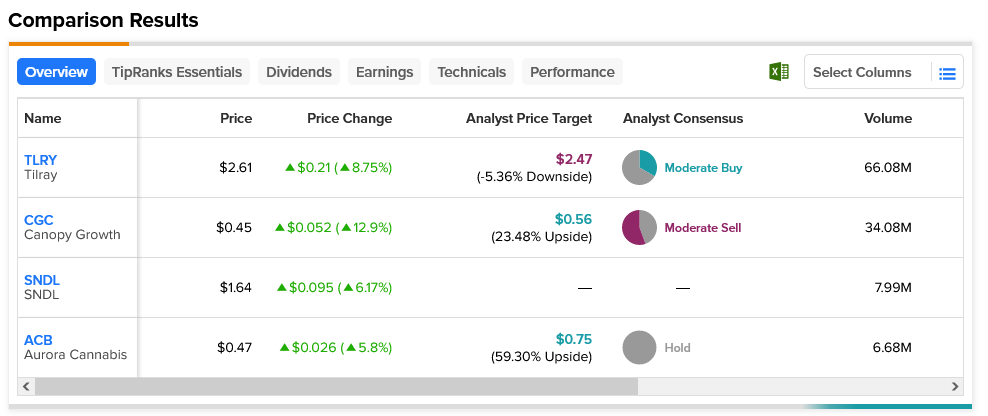Easily one of the biggest and weirdest issues of American jurisprudence in the last 10 years has been the matter of marijuana legality. It started out simply enough, with medical-only permissions, but then, states got in on the act, legalizing or decriminalizing in their own states, largely deaf to the federal government’s protestations. Now, cannabis stocks throughout the markets are largely rejoicing, up substantially, as the U.S. government reconsiders how it classifies marijuana.
Formerly, the United States classified cannabis as a “Schedule I” drug, which put it under a class of drugs known for having “…a high potential for abuse with no currently accepted medical use.” Given that medical marijuana is a thing, that casts doubt on at least half of that statement. Thus, there’s a move—reflected in a letter sent from the U.S. Department of Health and Human Services to the U.S. Drug Enforcement Agency (DEA)—to reclassify marijuana down to a “Schedule III” drug. A “Schedule III” drug is considered to have “…low risk for psychological or physical dependence.”
This was enough to send pot stocks spiking. Canopy Growth (NASDAQ:CGC) was up nearly 13% at one point in Wednesday afternoon’s trading. Longtime pot great Tilray (NASDAQ:TLRY) gained nearly 9%. SNDL (NASDAQ:SNDL) added over 6%, and Aurora Cannabis (NASDAQ:ACB) did likewise. While some might doubt the veracity of such a claim of low addiction risks around cannabis, if the move sticks, then it would make dealing in marijuana and marijuana products a much easier enterprise. It would likely also improve growers’ access to banking products and make them less cash-based, reducing their risks of theft.

As weed stocks gained today, Tilray was one of the leaders. However, its $2.47 average price target gives it a downside risk of 5.36%. Meanwhile, Aurora Cannabis’ gains were comparatively light, but with an average price target of $0.75, it boasts an upside potential of 59.3%.
















